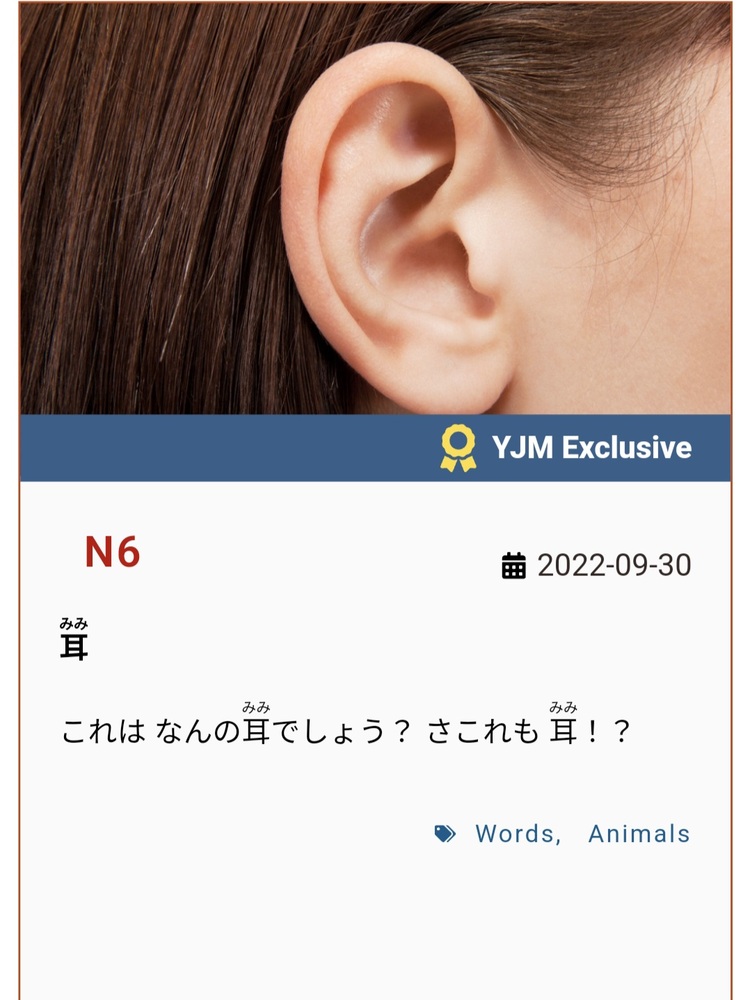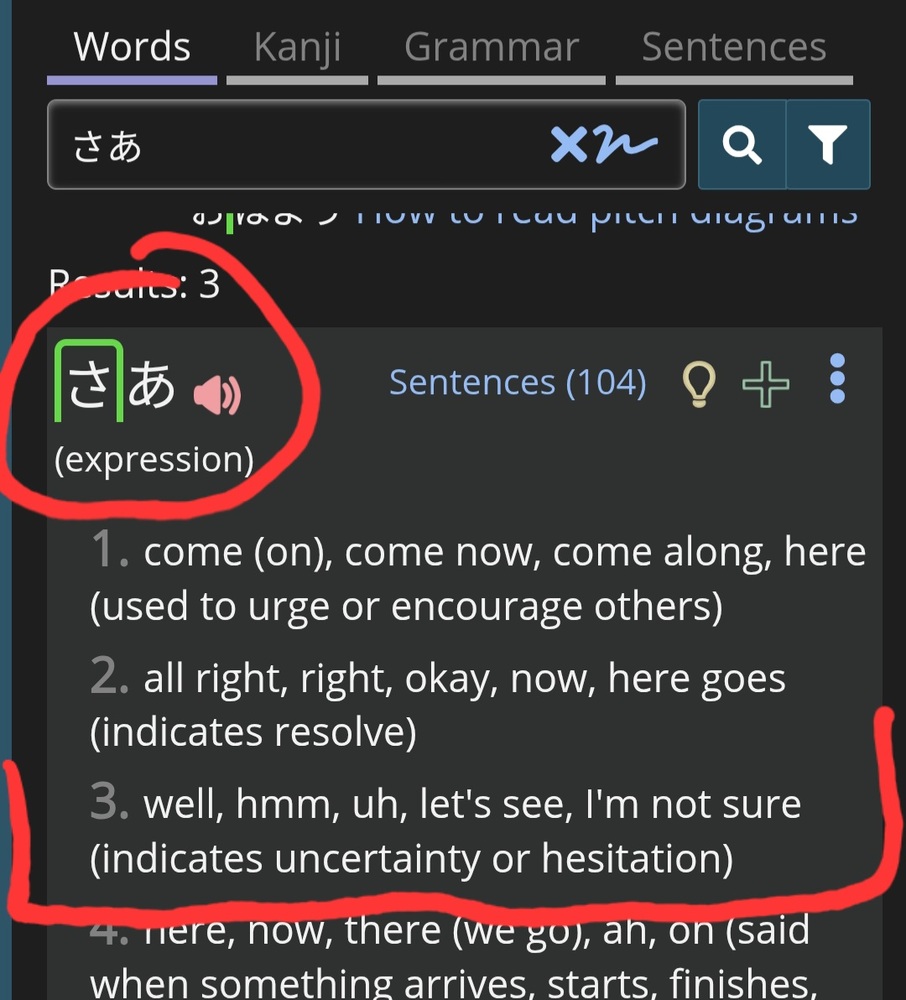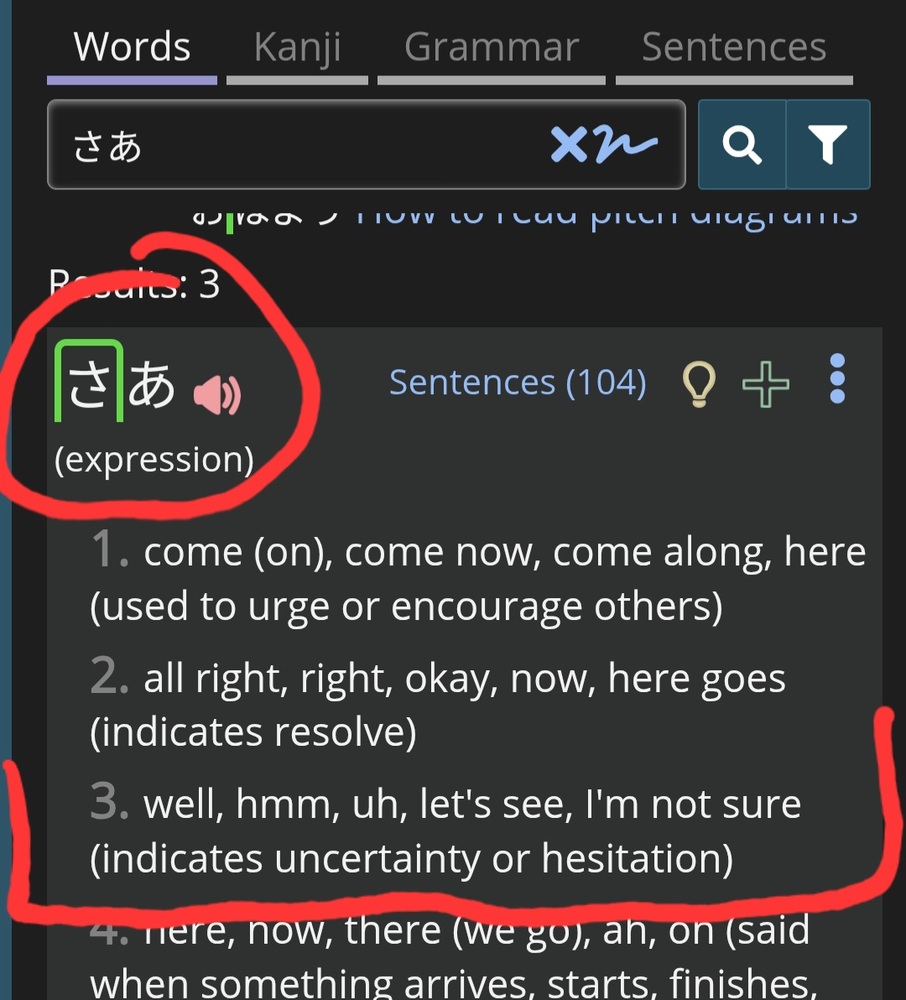掲示板 Forums - 「さ」used at the clause/sentence initial position
Top > 日本語を勉強しましょう / Let's study Japanese! > Anything About Japanese Getting the posts
Top > 日本語を勉強しましょう / Let's study Japanese! > Anything About Japanese
I've run into a baffling use of「さ」where it's placed at the very beginning of a clause/sentence.
Here is the senetence in context, with 「さ」marked with a different color:
これはなんの耳でしょう?さこれも耳!?
Wider context: this is a short sumary or lead for one of the easy readers on yomujp.
The reader was, as the sentence implies, about 耳 belonging to different animals, like ネコの耳、ウマの耳、ゾウの耳, etc., with first photos of only the ears, and then the full animal with a short description about the ears themselves: they are short, they are long, they are big, etc. Hence the query from the first sentence: なんの耳でしょう. The article ends with a funny example/use case for 耳 with a picture of a bread slice and sentence: これは、何ですか。これも耳です。パンの耳です。おいしいです。
It turns out パンの耳 is simply bread crust, so my bet is this is why in the lead we have this second sentence where there is an air of surprise: (パンの耳です。)さこれも耳!?
Here is a screenshot of the lead from the website (full article is behind a paywall):

For me everything in this statement is understandable and makes sense, but more so if I remove the 「さ」from it: これはなんの耳でしょう?これも耳!?
So I have two questions:
#1 What is the function of 「さ」 here in this initial position?
#2 Is this use case grammatically correct?
I referenced A Dictionary of Intermediate Japanese Grammar, which has a very informative entry on 「さ」, but only as a (primarily) male sentence-final particle that can substitute the sentence ending 「よ」.
In the related expressions section there is a mention on using it in a non-final position where it is contrasted with 「ね」.
Here is this part of the entry from the dictionary:

But somehow for me this does not seem to be referencing the use case from yomujp as here the non-sentence-final position is still mid-sentence or mid-clause and not at the very beginning.
My second theory is that maybe this is just a strange (mis)spelling of 「さあ」when 「さあ」is used to mark uncertainty or hesitation and which happens to be very often used at the sentence or clause initial position. The intended meaning also somehow fits, given that we first see multiple photos of animal ears and the the final photo is a bread slice which in Japanase it turns out also «has ears« if one translates it directly. Hence the hesitation: «Hmm, these are also ears?!«. But I'm not sure if this is actually what is hapenning there with 「さ」.
Maybe someone recognizes this or wants to get into this rabbit-hole as well? Kind ask to reference your sources if you have any : )
I believe the second theory is closer to the truth. See the third sense of さ in renshuu’s dictionary.
I believe the second theory is closer to the truth. See the third sense of さ in renshuu’s dictionary.
ポール、you probably meant to link to さあ , right?
Hmm, my second theory is actually referencing 「さあ」and not 「さ」, and in a funny coincidence it is also under the third entry on Renshuu:

Because the third one from your screenshot ポルー, doesn't it just mean the same as: 来い?
In the sense: come/come on - move, let's go, etc., so implying movement?
That does not fit here I think, whereas the hesitation of 「さあ」does at realizing that bread also «has ears« (パンの耳).
No, it’s not a synonym of 来る, it’s an interjection.
An expression of disbelief. Synonyms: come off it, shut up, c'mon, get out of here, no way; see also Thesaurus:bullshit Come on! You can't possibly expect me to believe that.
Thanks for stating so clearly what I was struggling to express.
Gotcha, that makes sense, and I agree - exclamatory disbelief does fit well here as in «Cmon, these are also ears?!« when running into the phrase: パンの耳.
As an aside, if you're interested, here is also an analysis from ゲーム言語 where he actually goes through the many meanings of 「さ」and in the section I link to he refers to the interjective encouregement with movement as the focus: さ(Come now, well then)
The timestamp in the video is: 12:04 if the link does not start there.
But yeah, I know what you mean here and I agree - disbelief does fit nicely. The only problem I have - no reliable sources, apart from this brief entry in Renshuu, seem to back up this definition and usage.
For example, the 新和英大辞典 entry for [さあ] pretty much aligns with the Renshuu entry I posted earlier, so:

So it does mention and give multiple examples for uncertainty/hesitation, but no examples for disbelief. Same in examples found and cross-referenced in Wisdom and Genius.
I'll try to ask my teacher next week as well, maybe she will be able to shed some light as well on this case.
And to be clear - this seems like a nuance thing that could be easier to grasped with more experience and by linguistic intuition, as マイコー mentioned, instead of a research heavy rabbit-holing that I'm doing here. Although, the latter could very well help the development of the former.
If you come up with any additional info that you feel will help others, please consider adding it as a usage note to the related words. You can add it to one of them, tag the other, then the note will be linked between the two.